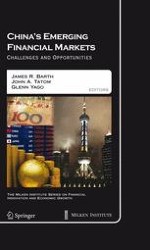2009 | OriginalPaper | Buchkapitel
The China Monetary Policy Handbook
verfasst von : Jonathan Anderson
Erschienen in: China’s Emerging Financial Markets
Verlag: Springer US
Aktivieren Sie unsere intelligente Suche, um passende Fachinhalte oder Patente zu finden.
Wählen Sie Textabschnitte aus um mit Künstlicher Intelligenz passenden Patente zu finden. powered by
Markieren Sie Textabschnitte, um KI-gestützt weitere passende Inhalte zu finden. powered by
